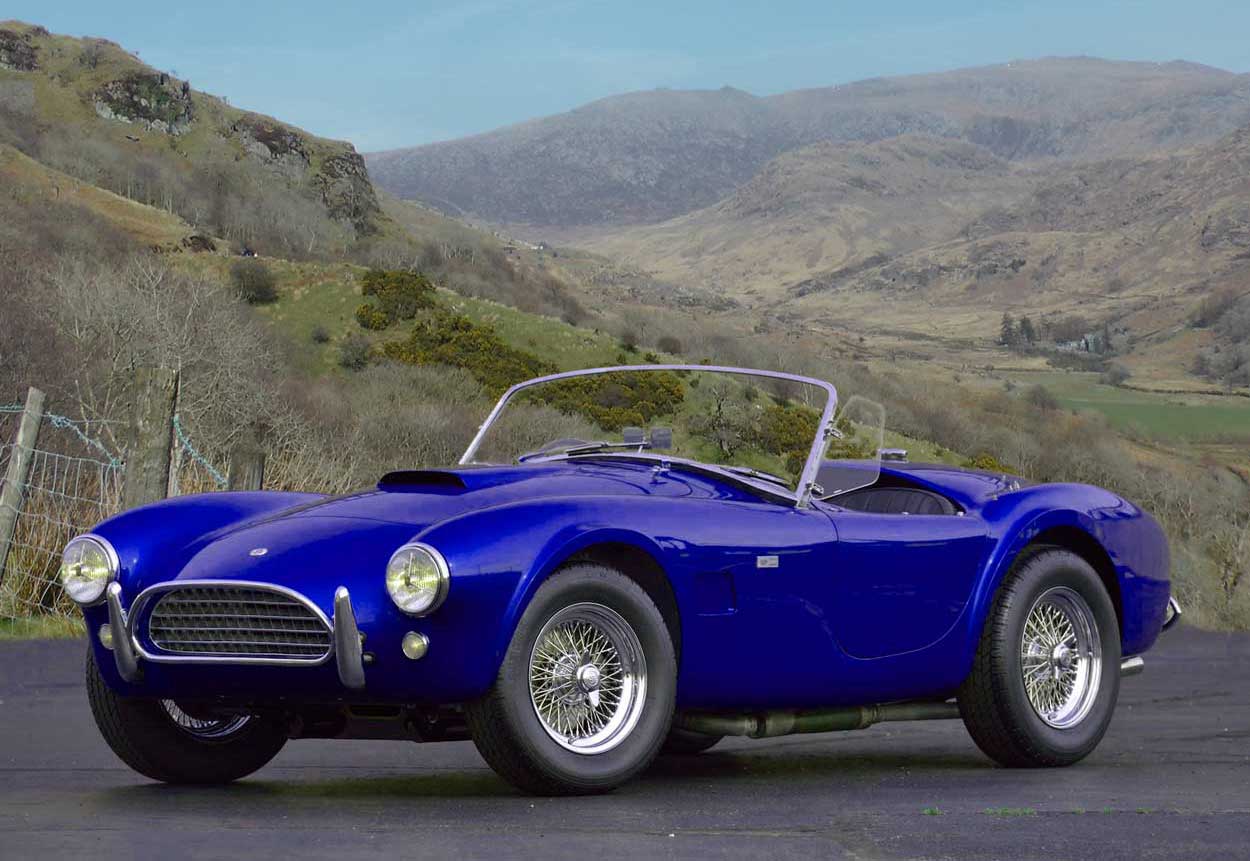The Shelby Cobra
The rumble of a V8 Shelby Cobra. Click on the start button to listen.

Carroll Shelby was not a well man. From the age of seven he had suffered from heart valve leakage issues, an ailment that affected him for the rest of his life. He first made a living raising chickens, after which he went bankrupt. Despite all this he finished up building probably the most copied car of all time; the Shelby Cobra.
He had had a fascination with cars and speed since an early age and by the time he was 24 he was an amateur racing driver, and a regular winner. Tracks he raced on included Monza, Silverstone, Aintree and Le Mans and along with Donald Healey he set new national speed records at Bonneville Salt Flats in 1954.
Whilst racing a Healey in what was possibly the most dangerous race in the world at the time, the Mexican Carrera Panamerica, he was seriously injured and required multiple operations but he still kept driving and racing, moving onto Ferraris. More racing followed including the Belgian Sports Car Grand Prix, the 6 Hours of Nurburgring and the Portuguese Grand Prix until he received the ultimate accolade; along with Roy Salvadori he co-drove an Aston Martin DBR1 and took first place at the 1959 24 hours of Le Mans. He still continued racing but by late 1960 he felt it best to stop because of health reasons. He was now ready for a new challenge.
AC Cars, of Thames Ditton in Surrey, was yet another of those car manufacturers with a very chequered financial past. Since 1953 they had been building the AC Ace; a two-door, two seater roadster with an open alloy body over a tubular ladder frame. By 1959 it was powered by a Bristol 2 litre six cylinder engine generating 120 brake horsepower and although this was a rather dated engine in such a lightweight car a maximum speed of 116 mph was possible. The problem was that by 1961 Bristol had decided to cease manufacturing this engine.
Shelby reasoned that the car was ideal for a larger and more powerful American engine and so he approached AC and asked them if they would provide him with a car capable of holding a V-8. AC complied and sent an engineless car over to him in California. He approached Chevrolet to see if they would sell him one of their engines but they refused; Ford however had just created a new V-8 lightweight 3.6 litre engine which looked as though it would be ideal for the purpose. It was perfect for the job. Combination of a lightweight British car and an American muscle engine meant that the Ace, now renamed the Cobra (and in America the Shelby Cobra) took the racing world by storm.
Shelby was not satisfied. Next he took a Ford 7 litre engine and adapted a Cobra to take it; this engine produced about 450 brake horsepower and had phenomenal acceleration, going from nought to a hundred mph in 10.3 seconds and nought to 60 in four seconds. This was just too fast for a lot of drivers however and crashes were frequent, particularly in wet weather when the sheer brute power coupled with the light weight of the car made a very unstable combination.
Road versions of this car were launched in 1965; they were somewhat more comfortable than the racing versions but not very much!
Shelby Cobras are now amongst the most popular and sought-after cars in the world; so much so that there are now far more copies in circulation as original ones and specialist companies are still building them; some sources have estimated that over the years more than 60,000 copies of the Cobra have been built.